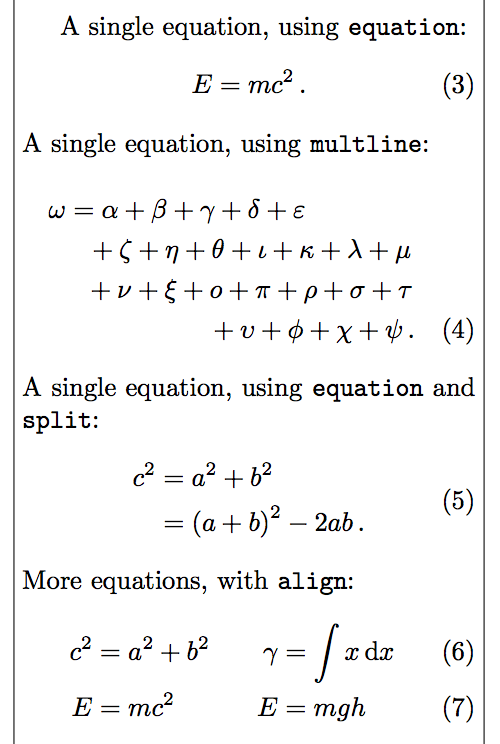

You'll first need to add the mathematics library to your book's H5P setup in Pressbooks. You can draft equations inside of H5P elements in Pressbooks with MathJax LaTeX.
#Latexit equation guide code#
Running content. Similar to titles, the code used to create the equation may display in the running content.The code used to create the equation may also display in the table of contents. Titles. Equations won't look good inside of a title because the style of the math will override the style of the heading.However, both AsciiMath and LaTeX offer a non-shortcode syntax, which we recommend using if you're placing math inside of a shortcode element.
#Latexit equation guide full#
See Shortcodes for a full list of elements in Pressbooks that are or can be created with shortcodes. This means that the and shortcodes cannot be nested inside of footnotes, image captions, or any other shortcode element. Any shortcode within another shortcode. Shortcode elements will break when placed inside of another shortcode.Math in most syntaxes should be compatible with most elements in your book, including image captions, textboxes, body text, and more.

To fix this, find the character code you need and wrap it in the latex shortcode. While Pressbooks supports as wide a range of special characters as possible, it may be that you find a character you need displaying as a question mark in your outputs. LaTeX can also be used for individual special characters. You can customize QuickLaTeX settings available from the Basic Settings tab or the Advanced tab.įor more information on QuickLaTeX, visit the website for the plugin. Click the Plugins tab on the left-hand menu of your screen.QuickLaTeX is the default mathematics rendering option for users and is can be used as an optional replacement for MathJax within individual books on other networks. QuickLaTeX is a plugin that allows users to write native LaTeX syntax directly into their books without wrapping shortcodes around every part of every equation.
#Latexit equation guide how to#
For more information on how to use shortcodes, see the Shortcodes chapter. Please note that MathML cannot be imported from a Word docx file. Wrap your equations in these shortcodes while drafting in Word. The following shortcodes can be used to convert your equations into MathJax-rendered expressions from imported Word docx files: LaTeX If you are drafting in Microsoft Word before importing to Pressbooks, you may be interested in knowing how to format equations so that they can import correctly into Pressbooks. Wrap equations in tags to render in MathJax.įor more information on how to draft equations in MathML, see W3C’s Mathematical Markup Language documentation. View the webbook or export your files to see how the equations display.įor more information on how to use AsciiMath, see AsciiMath’s website. Like LaTeX, AsciiMath can be drafted directly in the visual editor. There are two ways to use AsciiMath syntax in MathJax: Note that while MathJax and QuickLaTeX support similar syntaxes for creating mathematical expressions, there are some slight differences (detailed below).įor more details on how to use LaTeX, see LaTeX Project documentation. Choose your method of rendering LaTeX based on which features you need for your book. NOTE: LaTeX expressions can be rendered with either MathJax or the QuickLaTeX plugin.

You can find and change your MathJax settings by going to Settings > MathJax from the left sidebar menu. MathJax is activated and enabled as the default mathematics rendering solution for all hosted PressbooksEDU networks ( QuickLaTeX is the default math rendering option for authors on ). Pressbooks supports input provided using three different mathematical syntaxes for MathJax: LaTeX, AsciiMath, and MathML. MathJax is an open source JavaScript display engine that translates mathematical markup into accessible, high resolution equations that can be rendered in any supported book format on Pressbooks. Each method has an array of options and benefits. Pressbooks offers two different methods to create mathematical equations in your books: MathJax and QuickLaTeX.


 0 kommentar(er)
0 kommentar(er)
